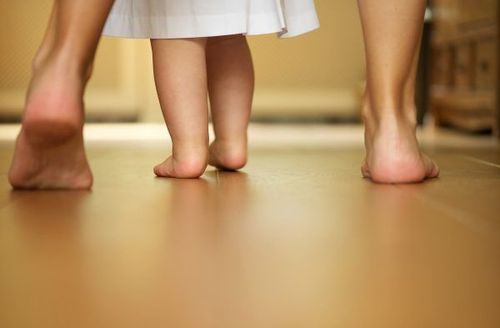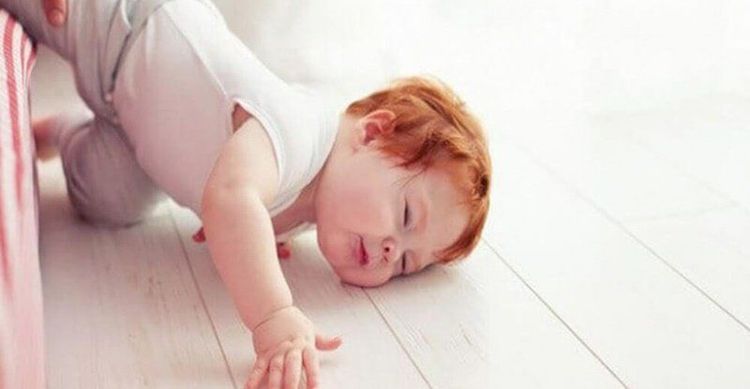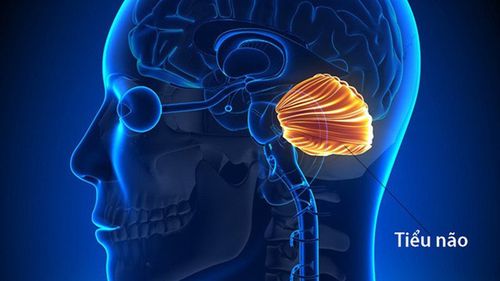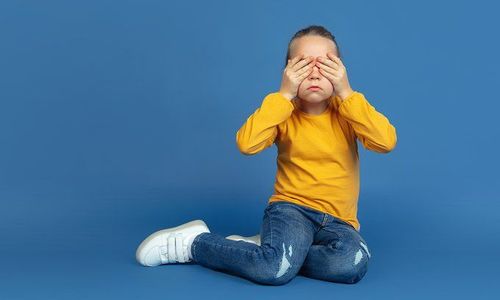This is an automatically translated article.
Most people feel dizzy from time to time and will improve soon after. Like adults, children can sometimes lose their balance, feel lightheaded or unsteady on their feet. However, if such sensations are repeated or the child staggers, it could be a sign of a balance disorder that causes movement disorders in young children.
1. What are the signs and symptoms of balance disorder in children?
Some children and adolescents may have only mild signs of balance disorder that are barely noticeable while others may have more severe symptoms. Very young children may not yet be able to describe how they feel, but parents will observe them stumbling or losing balance on their own feet. Older children and adolescents may complain of feeling dizzy, lightheaded, or disoriented.
In general, children and adolescents with balance disorders may experience the following:
Problems with balance, such as a feeling of unsteadiness, "wobbling" that makes it difficult for the child to stand climb, walk, turn, or climb stairs without falling or hitting objects. Walking with feet far apart or not being able to walk without stumbling or clinging to something. Walking in the dark or on uneven surfaces can also be difficult for children. Being dizzy: Dizziness is a feeling that your body or surroundings are moving. Children may describe it as spinning, swinging, sliding, or feeling like they are on a ferris wheel. In addition, other signs of a movement disorder in children may include:
Nausea, vomiting and stomach pain; Involuntary eye movements; Loss of things ; Vision problems; headache or migraine; Underdeveloped; Frequent falls; Fatigue and feeling unwell; Fear, anxiety or panic; Autism . In particular, children who stumble when they have a balance disorder may also have hearing loss or other hearing problems along with it. The sound seems muffled, especially when there is background noise. Children may also experience ear pain, pressure in the ear, and tinnitus.
At school, the consequences of movement problems in children can make it difficult for children to remember things, to focus, to pay attention, and to follow instructions. Children may not be able to hear the teacher or pay attention to the board, books, or assignments. Balance problems can also make it difficult for children to perform in exercise class or play sports.

Trẻ đi loạng choạng có thể là dấu hiệu của chứng rối loạn thăng bằng
2. What are the causes of balance disorders in young children?
Doctors don't always find the exact cause of balance problems in young children. However, symptoms of movement disorders in children can be caused by:
Ear trauma; Head or neck trauma; Ototoxicity; Migraine headache; Brain tumor in children ; Hearing loss; Middle ear infection caused by otitis media; Other infections (such as herpesvirus, chickenpox, cold, flu, meningitis, measles, mumps, or rubella); Travel sickness ; Epilepsy. If hearing or vestibular problems, migraines, or motion sickness run in families, children are more likely to have balance disorders.
3. Types of balance disorders affecting children
Types of balance disorders that can affect children and adolescents include:
Benign paroxysmal infantile spasms: Usually begins in the first 6 months of a child's life. Children with this condition tend to keep their heads tilted to avoid feeling dizzy. Fortunately, this condition usually goes away after the age of 5. Childhood paroxysmal vertigo, in which dizziness occurs suddenly. Children seem scared and they lose their balance and walk unsteadily for short periods of time. This condition usually goes away on its own as the child gets older. Some children with such vertigo are also more likely to have migraines in the future. Vestibular neuritis due to viral infection. The vestibular nerve sends balance information from the inner ear to the brain stem. This inflammation is often accompanied by hearing loss.

Hậu quả của các vấn đề về rối loạn vận động ở trẻ có thể khiến trẻ khó nhớ mọi thứ
4. How is balance disorder diagnosed?
To find out what baby stagger is, doctors will ask parents about the symptoms and check the baby's walking, balance ability, comprehensive motor skills. Your doctor will also want to know about your child's and family's medical history. At the same time, children also need to be examined by relevant specialists such as hearing, ENT.
In addition, supportive diagnostic tools that may be considered by the physician are:
Brain parenchymal imaging, such as an MRI or CT scan; Hearing test; Eye electromyography to assess balance using electrodes placed around the eye while a computer monitors involuntary eye movements; Stimulating the vestibule by examining parts of the ear while the child is wearing the headset; Measure your child's balance when standing on a stable or unstable surface.
5. How is balance disorder in children treated?
Some forms of balance disorder in young children will resolve on their own as the child gets older. In other cases, symptoms of this type of child movement disorder may come and go or continue for weeks, months, or longer. Depending on the cause, medication or surgery may help. In addition, physical therapy and balance training can help children manage their symptoms, reducing the frequency with which they lose balance and fall.
Specifically, balance training exercises (also called vestibular rehabilitation therapy) with a physical therapist or vestibular therapist may include exercises that help build strength strengthens the legs and erector muscles, and improves balance and coordination with the vestibular organs in the ears and eyes.
In addition, treatments for hearing loss, such as cochlear implants, can also help improve balance.
In conclusion, all children, especially toddlers, it is normal for children to stumble or lose their balance that sometimes tripping is normal. However, if such a child's movement disorder persists and is accompanied by dizziness, blurred vision, hearing loss, difficulty in going to school, it is indeed a pathology. At this time, parents need to take the child to the doctor for examination and timely adjustment, so that the child can soon function normally and feel confident in his own control ability.
Currently, the Pediatrics Department at Vinmec International General Hospital is trusted by many parents to examine the diseases that infants and young children are susceptible to. Vinmec brings satisfaction to customers and is highly appreciated by industry experts by:
Gathering a team of leading pediatricians: including leading experts with high professional qualifications ( professor, associate professor, doctorate, master), experienced, worked at major hospitals such as Bach Mai, 108.. The doctors are well-trained, professional, have a heart - a vision. Understanding young psychology. In addition to domestic pediatric specialists, the Department of Pediatrics also has the participation of foreign experts (Japan, Singapore, Australia, USA) who are always pioneers in applying the latest and most effective treatment regimens. . Comprehensive services: In the field of Pediatrics, Vinmec provides a series of continuous medical examination and treatment services from Newborn to Pediatric and Vaccine,... according to international standards to help parents take care of their baby's health from birth to childhood. Advanced techniques: Vinmec has successfully deployed many specialized techniques to make the treatment of difficult diseases in Pediatrics more effective: neurosurgery - skull surgery, stem cell transplantation blood in cancer treatment. Professional care: In addition to understanding children's psychology, Vinmec also pays special attention to the children's play space, helping them to play comfortably and get used to the hospital's environment, cooperate in treatment, improve the efficiency of medical treatment.
Please dial HOTLINE for more information or register for an appointment HERE. Download MyVinmec app to make appointments faster and to manage your bookings easily.
References: newsinhealth.nih.gov, kidshealth.org, nemours.org












